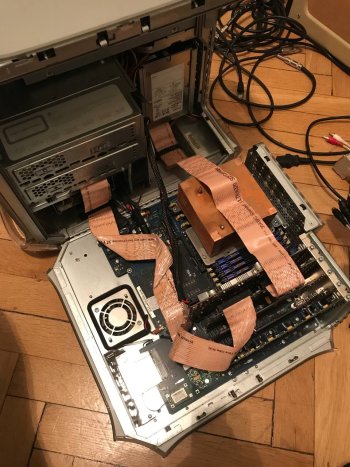If there is a later version of the Mac firmware for the SCSI card that works better with OS X but lacks OS 9 support we can likely extract the OS 9 'NDRV' from the older firmware and add it to the later.
Assuming there is enough room on the EEPROM.
From what I have seen during my flashing (and re-flashing) experiments the OS9 support for UL4D/UL4S was dropped starting from 1.1.x version, the latest to support OS9 (boot and management) is 1.0.1 and this is visible also looking at size of mac binaries portion that PC flasher will inject in the ATTO card:
From PC archive "epci0101.exe" (OS9 and OSX support, Mac firmware v1.0.1 not "Rev.B" version)
DOS/Utility/EPCI_MAC.U4D ---> 146.944 bytes
From PC archive "epci0102.exe" (OSX support only, Mac firmware v1.1)
DOS/Utility/Epci_mac.u4d (yes, in lowercase) ---> 75.776 bytes
To be honest I have not yet tried to install and boot OSX via the UL4D with 1.0.1 firmware (i will try sooner) but the ATTO Configuration Utility v3.38 (OSX 10.5.8) seems to communicate correctly with the board, the only issues I had was due to SCSI terminators: I have quite a nice collection of terminators of all kind (active and passive) but the only that worked as expected were the ones the seller bundled with the ATTO board and I am very grateful to him for that because they helped me a lot with troubleshooting


